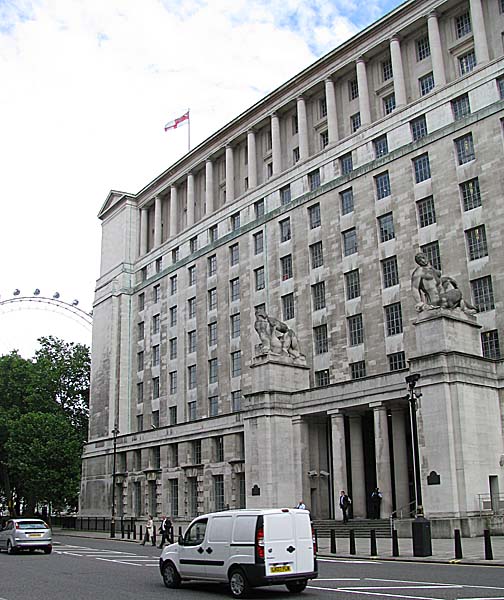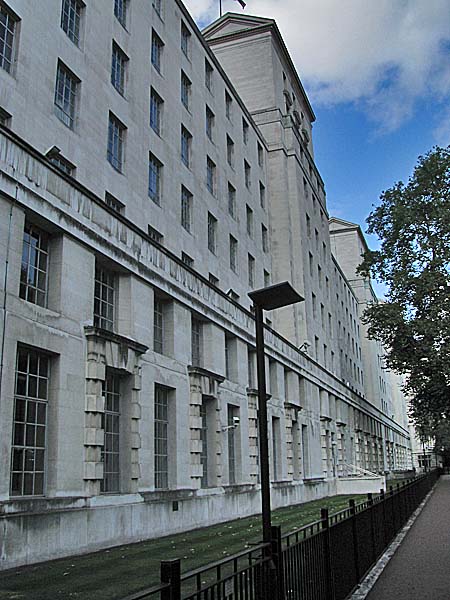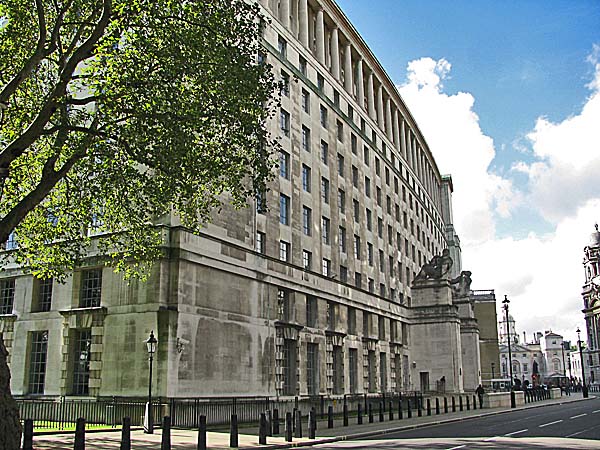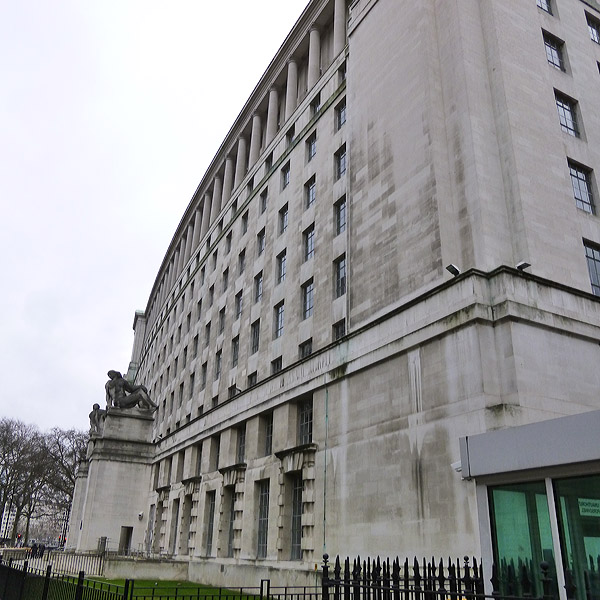This rather monolithic eight-storey
office building is home to the UK's Ministry of
Defence. It sits between Whitehall and the
Victoria Embankment and has its entrances on
Horse Guards Avenue (above) and Richmond Terrace
(below).


The building is separated from the Victoria
Embankment by a greenspace that in Tudor times
was occupied by Whitehall Palace.
The building was proposed in 1909 and
designed in 1915 by E. Vincent Harris.
However, its construction was delayed by two
World Wars and the depression of the
1930s. Construction began in 1939 but it
wasn't until 1951 that the Board of Trade
moved into the northern section of the
building. In 1958/59, the Air Ministry
occupied the Richmond Terrace end of the
building
The design called for a building that was 205
feet wide at the Richmond Terrace end and 300
feet wide on Horse Guards Avenue. It had
three internal courtyards that were originally
open to the sky but have now been fitted with
glazed roofs.
In 1964, when the three armed services were
merged and the Ministry of Defence was
created, there was a need for a large building
for its home. It was at this point that
the Board of Trade moved out and it became the
MoD Main Building.
The MoD say that in the mid 1990s they
concluded that," ... the building had suffered
cumulative decline, was expensive to maintain
and had severe Health & Safety
shortcomings. Having never had a major
refurbishment, the environment was no longer
consistent with a modern business
headquarters. ... Following a three-year
decant period, the MoD moved 3,150 staff back
into the redeveloped building. This phased
re-occupation was completed in September 2004,
bringing the programme to a conclusion on
budget and ahead of schedule. ... The
redeveloped workspace provides desks for all
people and also includes shared areas with
breakout spaces, quiet rooms and informal
meeting areas. New facilities such as the
café, restaurant, gym, information centre,
conference suite and business suite have also
been introduced. This new, more open
plan environment has increased the capacity of
the building by some 700 desks, and has
allowed for the disposal of five other London
sites. The new environment is better able to
support interaction, communication and
collaboration in a more team-based, less
hierarchical workspace."
The Horse Guards Avenue
entrance features sculptures by Sir Charles
Wheeler entitled 'Earth' and 'Water'.
Apparently the plan was to add two more called
'Air' and 'Fire' at the other end but that
didn't happen.
There are a number of statues in the garden
on the Victoria Embankment side of the
building including this one dedicated to the
Fleet Air Arm by the sculptor James
Butler. It was erected as a tribute to
the more than 6,000 individuals who lost their
lives in the Royal Navy Air Service since
World War One.
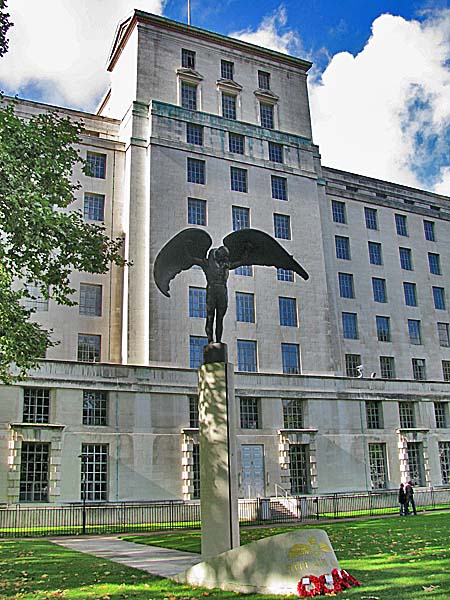
The statue below, of General
Gordon, who was killed at the siege of
Khartoum in 1885, used to sit in Trafalgar
Square but was moved to the Victoria
Embankment gardens in 1953. It is
attributed to Sir Hamo Thornycroft and was
created in 1887.
|
